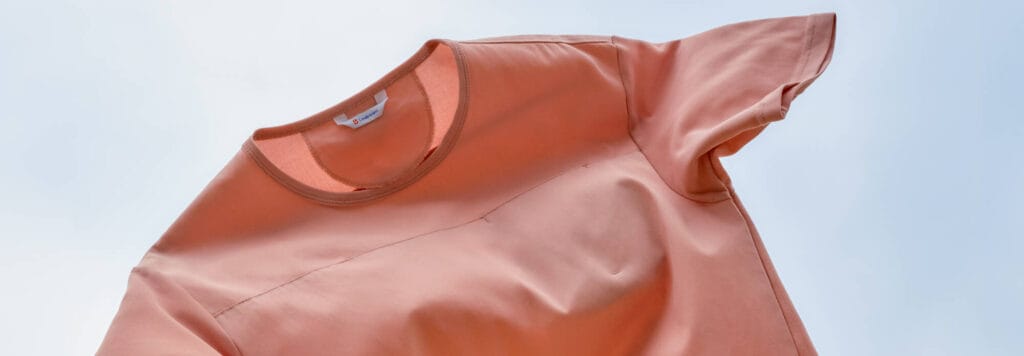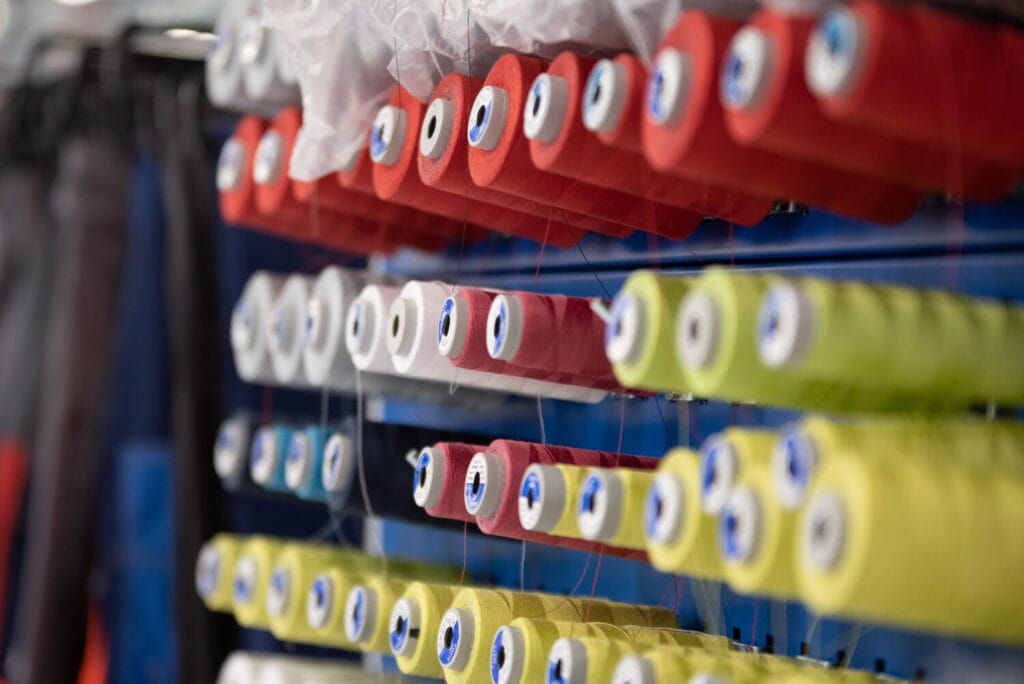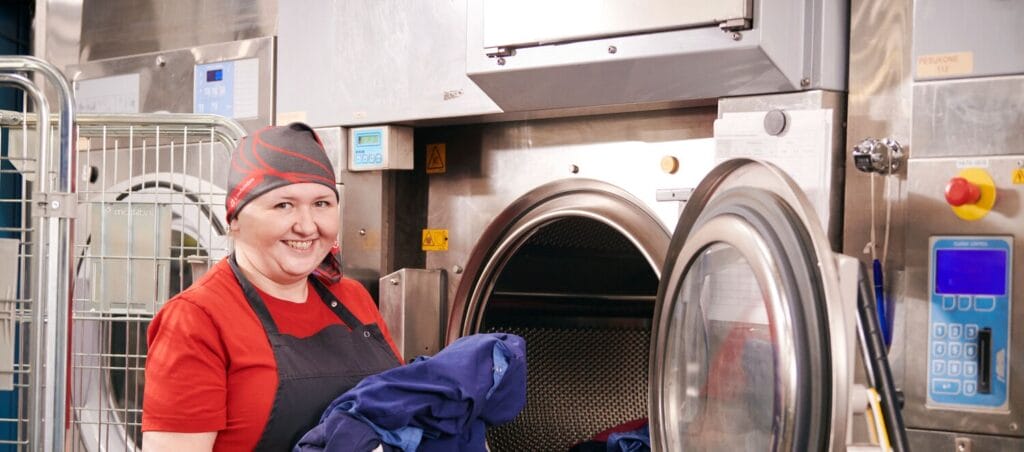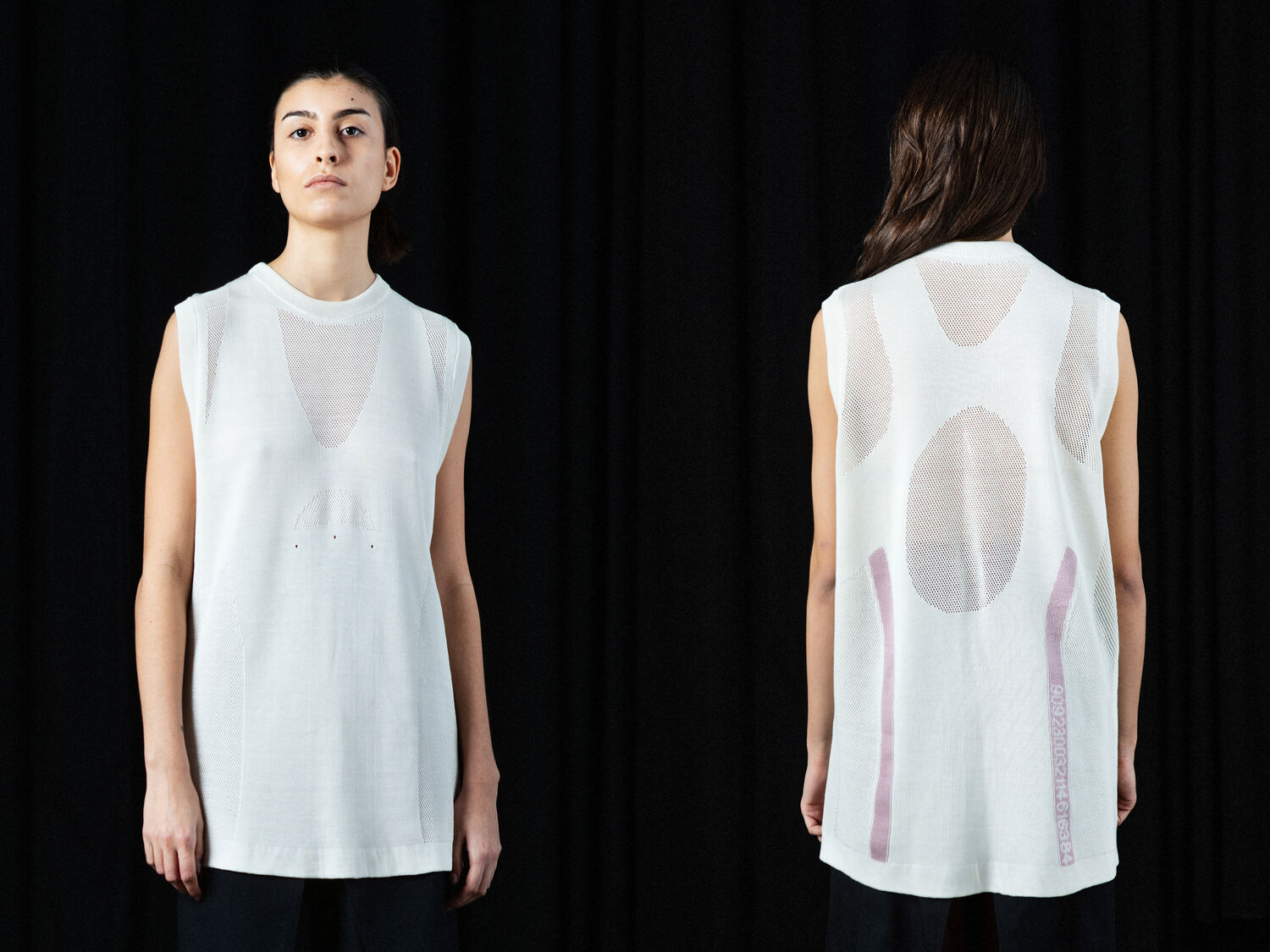
Upcycled hand towels and workwear end up in high fashion
In the Finix Project, old hand towels and discarded workwear end up in high fashion. Designers Elina Onkinen and Kasia Gorniak give us a glimpse of their upcycled clothing collection and the future of workwear.
The average Lindström cotton hand towel goes through over a hundred washes and 11,000 pairs of hands – and that’s just the first of its many possible lives. In the hands of designers Elina Onkinen and Kasia Gorniak, the old towels turn into an engineered knitted top, fashionable enough to take on the runway as part of their collection of upcycled functional wear for the Finix project, a programme dedicated to exploring new sustainable textile systems.
The top is the pièce de résistance of the collection that utilises only old hand towels and workwear from Lindström. The yarn is made with Ioncell technology that turns used textiles into new fibres without harmful chemicals. The cotton towel is extremely durable, to begin with, but with the Ioncell process, the new fibre becomes up to 2.5 times more durable than virgin cotton – and a wonderful material from a fashion perspective as well. “The Ioncell process is very inspiring because it can improve the raw materials’ properties. You wouldn’t realise the top is made from old hand towels because it has such a different feel to it,” explains Onkinen, who specialises in bio-based and recycled materials in her research. “The yarn becomes luxurious!” chimes in Gorniak, who has worked extensively with knitted garments.

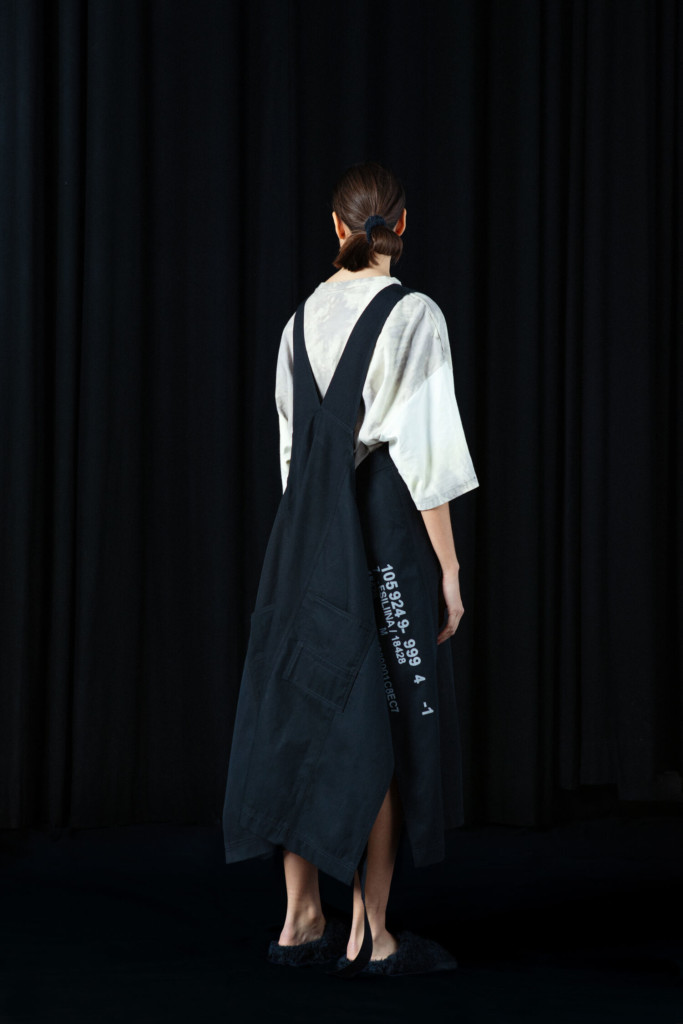
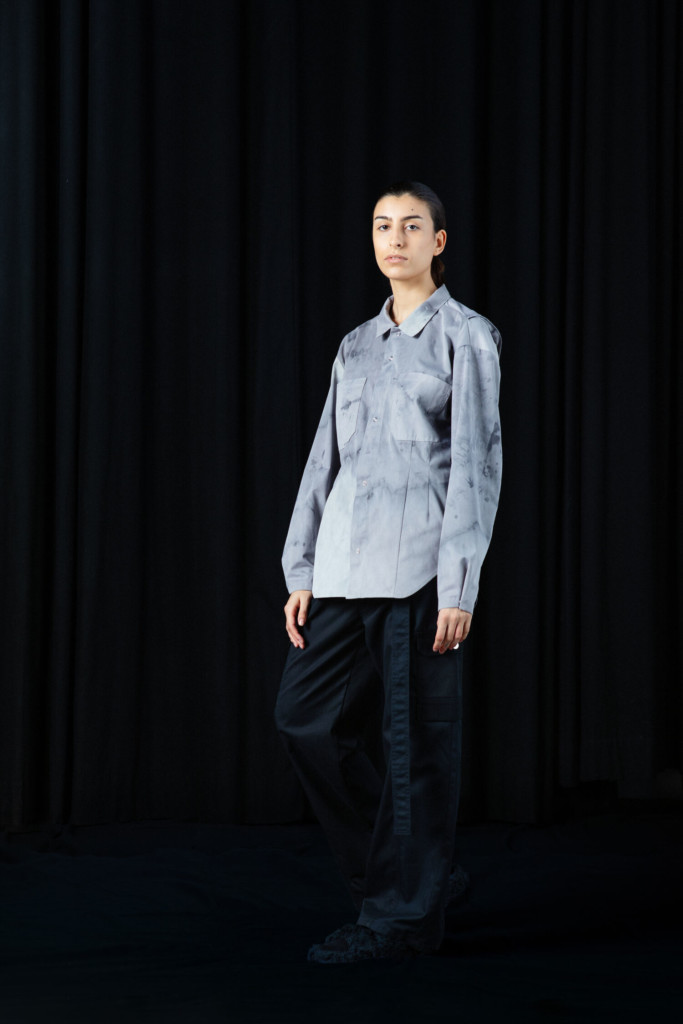
Circular comes in many forms
The collection consists of ten garments, a bag, and a pair of shoes, all made from Lindström’s discarded trousers, overalls, T-shirts, a baker’s jacket and the Ioncell yarn spun from the hand towels. The designers wanted to experiment and demonstrate the variety of ways in which old items can be reused.
On one end of the spectrum are methods like Ioncell, where the old fabric is chemically deconstructed and transformed into a completely new fibre. And on the other end, some clothes serve the same purpose as they did in their previous life, just touched up, like the T-shirt in the collection that was only redyed using plant-based dyes.
Most of the clothes in the collection were made from deconstructed workwear, meaning that the designers unstitched the old garments and utilised the fabrics in their new designs. “Deconstructing the old garment and using the fabric as it is, when possible, is a more sustainable way of reusing the material, as you don’t have to recycle it mechanically or chemically,” Onkinen explains.
Circular thinking was omnipresent, and nothing was left to waste, not even the cut-offs from the deconstruction process. “We collected the cutting waste and made shoes through mechanical recycling, which means grinding the old fabric down to a fluff,” shares Onkinen, before confessing that shoe design became her new passion during the project.
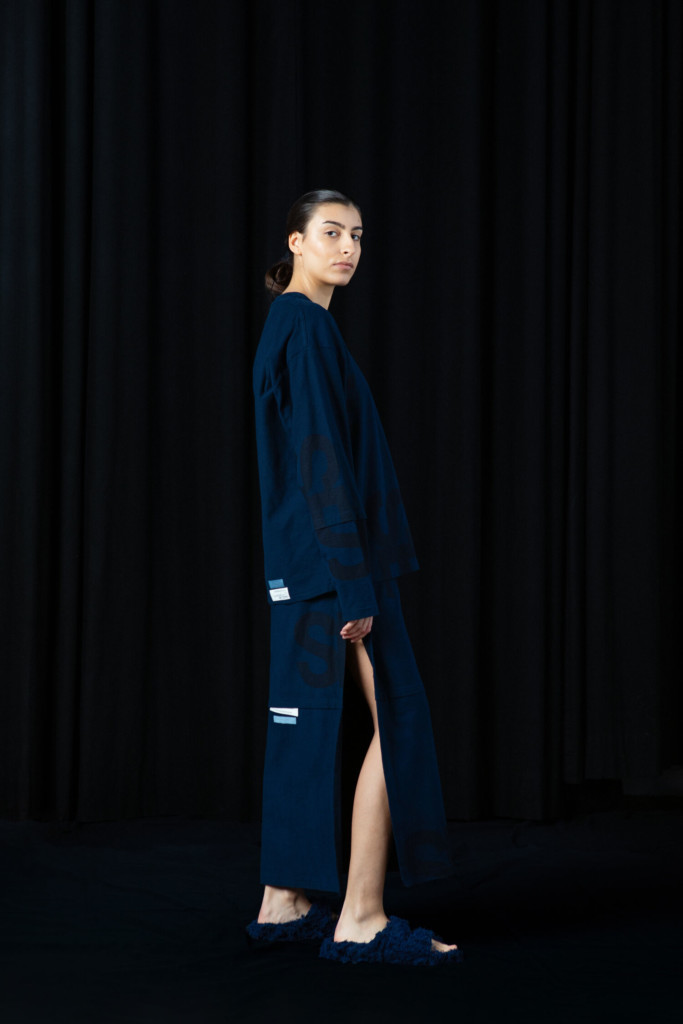
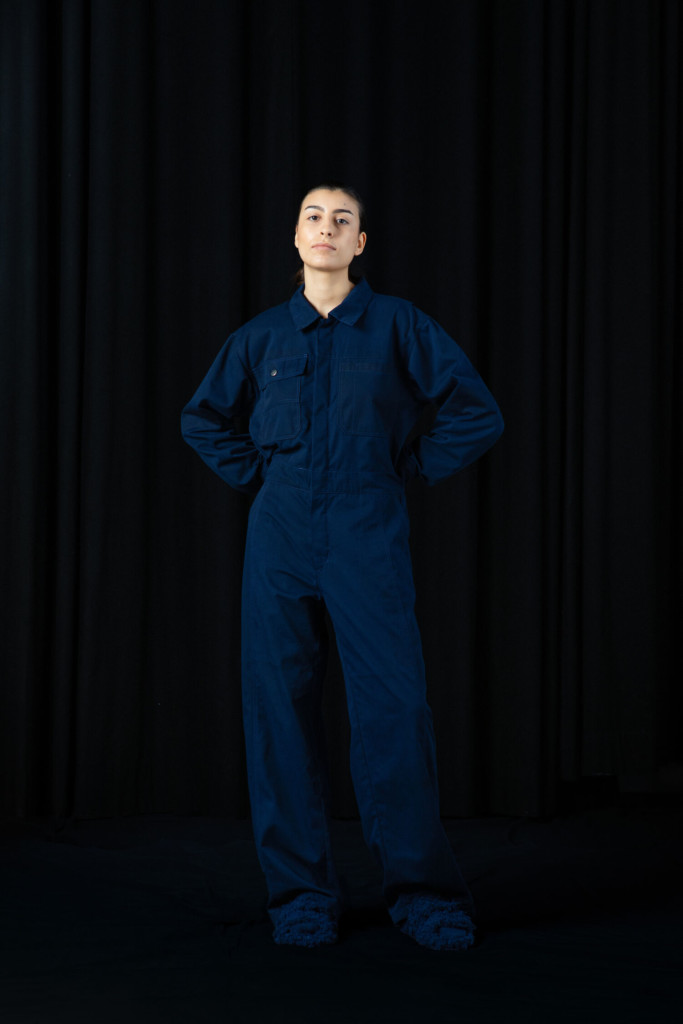

Functional clothing you can wear every day
Lindström’s old workwear was both raw material and inspiration. Many features from the old garments, such as adjustable waistlines, are a recurring theme in the new items. “What’s inspiring about this process and designing workwear or functional wear is that it’s not bound to trends or cycles that change fast,” Onkinen explains
Working with Lindström’s old workwear and hand towels also meant diving into the future of workwear. The brief was to design a collection of functional clothing for the year 2030, and the designers spent a lot of time researching upcoming trends and changes in the way people live and work. “We looked into what people’s lifestyles would be like in 10 years; will the work-life balance become even more fluid than now? We wanted to take the garments from purely workwear to something you can wear every day,” Gorniak explains.
Versatility was not only a fashion choice but also a way to make the garments more sustainable. The designers didn’t only think about this second life cycle of the garments but also what happens to them later. “We had to think about what kind of design solutions should be made for the circular economy,” Onkinen notes.
Designing for several life cycles
The designers say there has been a lot of interest in their collection. The Ioncell top was on display at Slush, one of the most prominent start-up events in the world, and there have been talks about setting up an exhibition for the entire collection. Even though the line of clothes is a project of exploration, the designers say they were constantly aware of its further implications. The recycling of worn workwear can be complex sometimes.
“We thought about it a lot during the project,” Gorniak explains. “It takes a lot of time to pull apart the garments, re-dye them or treat them chemically or mechanically. We were discussing how this could be done on a commercial level.” As the project showed, there are many ways to reuse old fabrics. However, the solution comes down to system thinking and designing for several life cycles in the first stage, stresses Onkinen. “Even if you’re designing for the first life cycle, you should already be thinking about what will come after that one. That also applies to workwear.”



